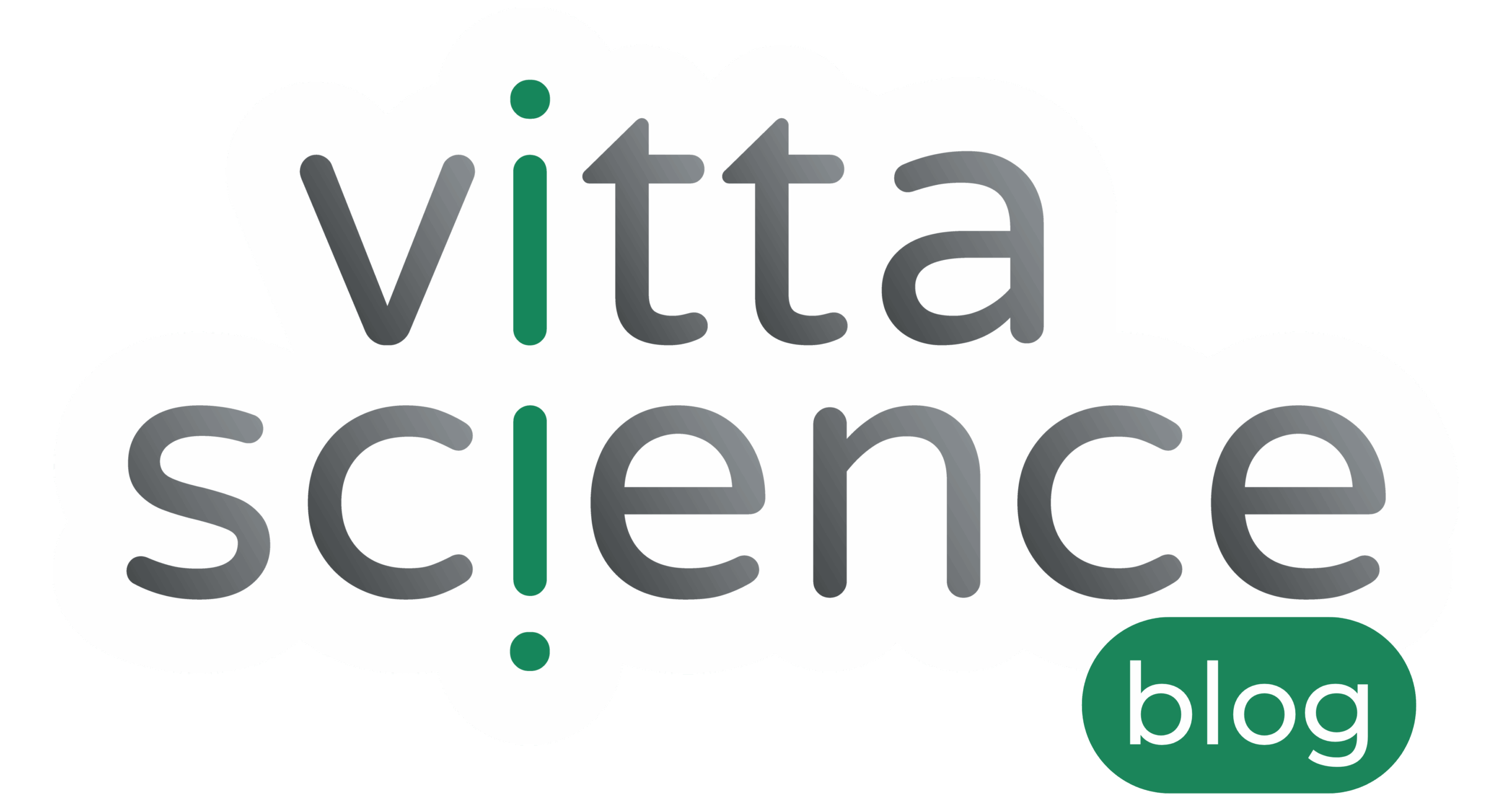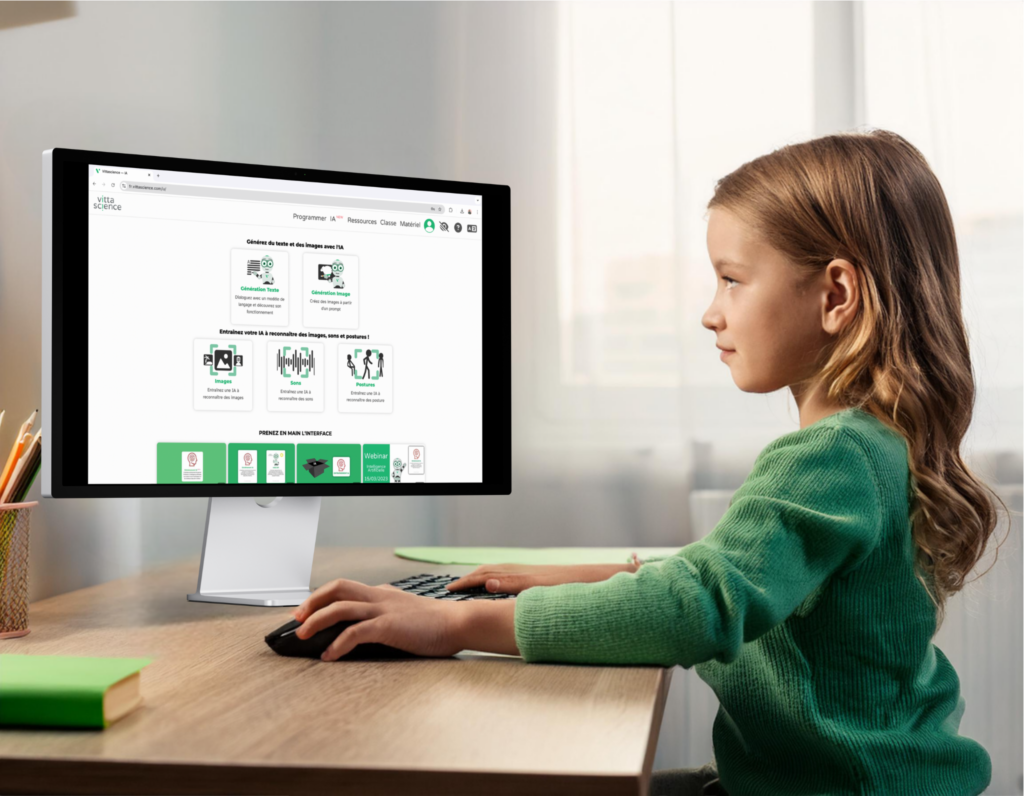Understanding how AI works
For several years, we have all been hearing about artificial intelligence, a subject that is experiencing extraordinary development. But do you really know what AI is?
Definition
Artificial intelligence (AI) is a set of algorithms that allow a machine to analyze, decide, and intelligently adapt to situations based on data. The main goal of AI is to solve complex problems related to human activities and to model human intelligence to automate various tasks.
We can distinguish two different approaches:
- The symbolic approach : Based on knowledge-based systems, this approach uses logical rules and symbols to represent and manipulate knowledge. It is particularly effective for tasks such as logical reasoning, planning, and problem solving.
- The connectionist approach : Using artificial neural networks, this approach is inspired by the functioning of the human brain, known as “deep learning”. Neural networks are able to learn and improve themselves through machine learning algorithms, making them effective for tasks such as pattern recognition, data analysis and content generation.
AI manifests itself in various forms, including text and natural language analysis, knowledge modeling for decision support, machine learning, real-time image and scene analysis, and the performance of physical actions.
AI in Education
L'artificial intelligence offers immense potential to transform the education sector. Thanks to AI, teachers can benefit from new educational tools that make learning more interactive and adapted to the individual needs of students. The use of these tools offers many capabilities from a pedagogical point of view, particularly with regard to the development of skills.
Benefits of AI in Education:
- Personalization of learning : AI capabilities enable the creation of personalized learning experiences by adapting content and teaching methods to the specific skills and needs of each student. For example, intelligent tutoring systems can identify a student’s gaps and provide targeted exercises to address them.
- Educational data analysis : AI tools have the ability to analyze large volumes of educational data to provide insights into student performance, learning trends, and areas that need attention. This allows teachers to make informed decisions to improve teaching.
- Accessibility and inclusion : AI can help overcome barriers to learning for students with special needs. For example, speech recognition and text-to-speech applications can make it easier for students with visual or hearing impairments to access educational resources.
Automation of administrative tasks : By automating repetitive administrative tasks, such as managing timetables, AI allows teachers to focus more on teaching and supporting students.
Generative AI: AI tools for content generation
Text generation: use cases
There text generation by artificial intelligence, more commonly known as text-based generative AI, offers many opportunities to enrich the educational experience. With the text generation tool, you can easily create varied and engaging educational content for your students. It is also a versatile tool that you can include in your teaching. Here are some examples of use:
- Creating exercises and quizzes : Automatically generate multiple choice questions, writing exercises or math problems adapted to the level of your students. This allows you to diversify the types of exercises offered without additional preparation effort.
- Writing interactive stories : Design interactive stories where students can choose how the story unfolds based on their choices. This approach stimulates students’ imagination and engagement while strengthening their reading and writing skills.
- Writing assistance : Provide suggestions and templates for students' writing assignments. The tool can help structure ideas, suggest introductory or concluding sentences, and even check grammar and spelling.
- Translation and summary of texts : Translate educational documents or summarize complex articles to make them accessible to students. This facilitates access to international educational resources and enriches the educational content available.
How to use the text generation tool in class?
Using the text generation tool is simple and intuitive, even for those who are not familiar with AI. Here are some steps to integrate this tool into your daily teaching:
- Access to the tool : Go to our platform and access the “AI” page. All features are available for free, and you can create an account to save and share your projects.
- Application selection : Select the desired application, whether it is to create quizzes, interactive stories, writing suggestions or text summaries.
- Classroom use : Present the generated content to your students. You can print the exercises, share the interactive stories, or provide writing suggestions via email.
- Feedback : Use student results and feedback to refine and improve generated content. AI continuously learns from human interactions and adapts to provide increasingly relevant suggestions.
Generative AI: AI Tools for Visual Creation

AI Image Generation
There image generation by artificial intelligence opens up exciting new perspectives for education. Thanks to advanced algorithms, the generative AI tool allows you to create unique visuals adapted to various educational contexts. Here are some use cases of this generative AI:
- Illustration of educational concepts : Create custom images to illustrate complex concepts in science, history, geography, and more.
- Creation of educational materials : AI can help produce attractive and professional visuals in just a few clicks, saving time and effort.
- Students' creative projects : Encourage students to use this generative AI for the development of their school projects. Whether it’s creating digital art, designing posters for a school event, or illustrating stories, this tool stimulates student creativity and engagement.
Educational activities with an image generation tool
Integrating an image generation tool into your teaching activities can make learning more interactive and fun. Here are some ideas for using this tool in the classroom:
- Artistic creation workshops : Organize workshops where students can explore image creation using AI. They can experiment with different art styles, colors, and shapes to create original works. This is a great way to develop their artistic sense and understanding of visual techniques.
- Visual research projects : Have students conduct research projects on specific topics and use the tool to generate images to illustrate their findings. For example, in a project on endangered animals, students could create images of the species they are studying and present them with key information.
- Creation of educational comics : Use AI to create characters and scenes, then have students write dialogue and stories around these visuals. This can be a fun and engaging activity to strengthen writing and storytelling skills.
- Visual educational games : Develop educational games using AI-generated visual content. For example, create playing cards with images and information about different topics (animals, countries, inventions) and organize memory or matching games.
AI tools for training and recognition
Training AI to recognize images
Training an AI to recognize images is an educational activity that is both fun and enriching. On the Vittascience platform, teachers and students can access free educational tools to train artificial intelligence models to identify and classify images, based on categories. Here's how it works:
- Data collection and labeling : Students can start by gathering a collection of visual data from various sources and then labeling them to indicate what each image represents (e.g., cats, dogs, birds, etc.), which will form a category. This labeling process is crucial for supervised learning.
- Model training : Once the images are categorized, they are used to train a neural network model. On Vittascience, this process is simplified thanks to an intuitive interface that guides users through the training steps and allows real-time visualization of the model's progress.
- Assessment and adjustment : After training, students can test the model by presenting it with new images to check its accuracy and effectiveness. If necessary, they can adjust the parameters or add more data to improve the results.
On the Vittascience platform, once your program is created, you can discover and understand how neural networks work, which are the basis of deep learning. Deep learning works in a similar way to the human learning process. It is based on the analysis of large amounts of data, which can be compared to human experiences, to learn from them and develop new prediction or classification capabilities.
Use in educational environment
Vittascience's AI image recognition tool can be used in various educational activities, such as:
- Sign language : Train models to recognize gestures that mean specific words or phrases to help students develop their skills.
Training AI to recognize sounds
Recognize sounds is another fascinating application of artificial intelligence. Our platform also allows to train models for this task:
- Sound data collection : Students can record different sounds (e.g., musical instruments, nature sounds, spoken words) and label them.
- Model training : Similar to images, labeled sounds are used to train the model. Students can visualize waveforms and spectrograms to better understand the characteristics of the sounds.
Assessment and adjustment : Models can then be tested with new sounds to assess their accuracy, and adjustments can be made to improve performance.
Use in educational environment
Vittascience's AI sound tool can be used in various educational activities, such as:
- Physical Science Projects : Analyze the acoustic characteristics of different materials or environments.
- Foreign languages : Train models to recognize specific words or phrases to help students improve their pronunciation and comprehension.
By incorporating these activities into your lessons, you make learning science and languages more interactive and engaging.
Training AI to recognize postures
Training AI to recognize postures is an innovative activity that can be particularly beneficial in educational contexts such as physical education:
- Posture data collection : Students can record videos or take photos of different postures (e.g. yoga positions, dance moves).
- Model training : Posture data is used to train models that can recognize and identify these postures. Vittascience's interface allows you to visualize the key points of the body and the movements analyzed by the neural network.
- Assessment and adjustment : Models are tested and adjusted to improve their accuracy, allowing students to see how their own movements are interpreted by the AI.
Conclusion and perspectives
The Future of AI in Education
Artificial intelligence is transforming the educational landscape, opening up new opportunities for enrich learning and teaching in different fields. Through tools like those we offer on Vittascience, teachers can integrate AI into their teaching practices in a fun and accessible way, while raising students' awareness of the risks associated with its use.
The use of Artificial Intelligence in education is promising, several advantages emerge from it:
- Personalization of learning : AI can help create personalized learning paths based on each student’s needs and progress. This helps better accommodate varying skill levels and learning styles.
- Real-time feedback : Thanks to recognition and analysis systems, AI can provide immediate feedback to students, allowing them to correct their mistakes and improve their skills autonomously.
New jobs and skills : Integrating AI into education prepares students for the jobs of tomorrow, giving them the skills needed to evolve in an increasingly digital world.

